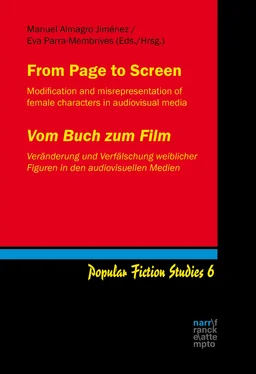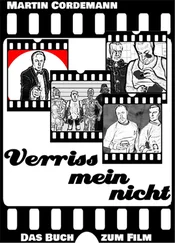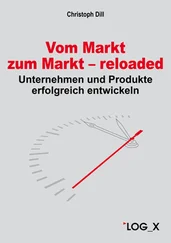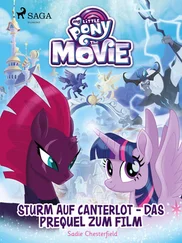Williams, J. (2012). Hollywood Myths: The Shocking Truths Behind Film's Most Incredible Secrets and Scandals . Minnesota: Voyageur Press.
GENDER EDUCATION AND INTERMEDIALITY.
A Look at the Reimagining of Secondary Female Characters from Book to Blockbuster
Yiyi López Gándara
I write this introduction in the midst of a world pandemic that has forced millions of people worldwide to #stayathome under lockdowns in dozens of countries. In many of these countries schools have closed and for the first time in peacetime in modern history children and teenagers the world over are, in the luckiest cases, learning from home. According to UNESCO, nationwide school closures have impacted over 91 % of the world’s student population so far1. In this scenario, educational buzzwords, such as “e-learning” (Cross, 2004) “seamless learning” (Wong, Chai, Aw, 2017) or “hidden curriculum” (Jackson, 1968) are finally making some sense in Western countries. Both formal and informal learning, official and unofficial curricula, are merging in the kind of hybrid educational experiences that are taking place in the home, where not only books and textbooks, but also videoconferences, virtual presentations, educational apps and streaming services, among others, are being used. The educational value of films has long been acknowledged (Swain, 2013) and it is that value that lies at the core of many family features (Metcalf 2016: 117). It then comes as no surprise that subscriptions to streaming services have skyrocketed during the COVID-19 lockdowns, with Netflix and Disney+ becoming strong competitors worldwide (Sweney, 2020).
The effects of stereotypical gender representations in media texts on children is a major concern for both educational and media studies researchers (Goulds et al., 2019; Steyer, 2014; Ward & Aubrey, 2017). At a time when family features are being consumed on a mass scale worldwide, and when it has become easier and cheaper to stream whole film franchises than to get a book through the post, it seems necessary to analyse the kind of gendered messages that young audiences are receiving at the intersections of formal and informal education under lockdown. In order to do so, this chapter examines the reimagining of secondary female characters in their transition from book to film, revealing the, for the most part, patriarchal mechanisms for gender construction of mainstream narratives (Gledhill, 2006: 113). These mechanisms, which can be classified into four main categories (purging, downgrading, cosmetic upgrading and earnest upgrading), do not respond to the needs (technical, aesthetic or otherwise) of the new medium, but rather to more or less conscious ideological motivations, betraying filmmakers’ definite political standpoint. Furthermore, they are shared by many book-based family features covering a period of nearly seventy years, including Peter Pan (1953, 2002), Mary Poppins (1964, 2018), The Jungle Book (1967, 2016), Willy Wonka (1971, 2005), The Little Mermaid (1989), Beauty and the Beast (1991, 2017), Jurassic Park (1993) and Jumanji (1995). This reimagining of female characters has become the backdrop for the gender education of whole generations of viewers, including the COVID-19 generation.
2 Secondary Female Characters from Film to Blockbuster
Secondary characters do not abound in books and films targeted at young audiences, and there are cognitive, experiential and pedagogical reasons for this: children find it difficult to distinguish between characters; they have limited experiences (they do not know many people); only one adult suffices to perform the social and pedagogical role of guide or teacher (Nikolajeva, 2004: 172). In addition to this, it is widely acknowledged that women are extensively underrepresented in both children’s books and films (Giaccardi et al., 2019; McCabe et al., 2011; Smith et al., 2018) and, although the trend seems to be shifting (Heldman et al., 2020), there is still a long way to achieve equal representation, both from a quantitative and a qualitative standpoint. If this is so regarding women protagonists (Lauzen, 2019), the issue becomes especially compelling when it comes to secondary characters, whose importance in the shaping of a collective consciousness about women and their role in society has often been overlooked in the criticism.
In books, secondary female characters are often key for the creation of a diverse, feminised background against which the main action develops. This also generally reflects the vast majority of children’s experiences in Western societies, where women are still the primary caregivers. As opposed to this, book-based family films and blockbusters exhibit a conspicuous absence of secondary female characters, and there is no underlying cognitive, experiential, pedagogical or technical reason for it. In a recent review of book-to-film adaptations, Meg Miller (2016) concludes that women characters in books are represented as more complex, nuanced and defiant of social rules than in film; she also states that the advent of blockbusters somehow redefined female roles to make them fit more stereotypical depictions. In the passage from book to blockbuster, those secondary plots and background stories, rich with female characters that help construct a more realistic narrative, are abandoned in favour of a grand (masculine) narrative.
The effect of such dominant narratives on actual audiences has been both attested to (Goulds et al., 2019; Steyer, 2014; Ward & Aubrey, 2017) and contested. In this regard, Christine Gledhill has argued that audiences do not just passively receive, but rather interact with, media products (Gledhill, 2006: 114) and that that interaction necessarily eludes the adoption of pre-established “fixed positions” (Gledhill, 2006: 118). It is true that viewers (even very young ones) bring into the act of watching their own set of references, beliefs, experiences and motivations that may support, thwart, counter or even cancel out filmmakers’ intentions, and that films (even blockbusters) may open up gaps for meaning negotiation. However, in the specific case of young audiences, a combination of semiotic and mimetic approaches must be adopted as children often fail “to acknowledge fictionality as a literary convention, including the fictional status of characters” (Nikolajeva, 2004: 172). This effect might even be increased by the materiality that the screen affords these characters.
In this scenario, intermedial analysis offers the possibility of observing mechanisms to which audiences do not generally have access: these are conscious mechanisms that, through operations of selection, reduction, deletion, addition, adaptation, rewriting and emphasis, are precisely intended to fix meaning. In this way, intermedial analysis reveals the worldviews and intentions behind filmmakers’, screenwriters’ and producers’ decisions when adapting a text. So, even if the experience of the film itself opens up new possibilities for viewers, it certainly, and deliberately, closes others offered in the book. This reduces considerably the possibilities for feminist meaning negotiation.
Written for the screen by Bill Walsh and Don Da Gradi and directed by Robert Stevenson, Mary Poppins (Disney, Stevenson, 1964) was the most expensive film to that date and remains nowadays one of the most profitable films of the 1960s1. The story behind Walt Disney’s long courting of author P. L. Travers for the rights to adapt her book series is already well known and has been recounted in both Valerie Lawson’s biography of Travers (2013) and Disney’s Saving Mr. Banks (Owen, Collie, Steuer, Hancock, 2013). In spite of the success of the film, Travers was deeply unsatisfied with the end result (Lawson, 2013: 276). To begin with, she disliked the way her beloved nanny had been dulcified and made much kinder and merrier, less conceited and arrogant, than the character in the book. Behind this process of dulcification, one can see the male gaze (Mulvey, 1999) at work, reproducing an unattainable ideal of female perfection. Moreover, in the film, Mary Poppins’s lack of bonds and close relationships with other women prevents her from becoming a catalyst for sorority. As it was said of another all-too-perfect female hero, Catwoman, Mary Poppins “may forge a space for herself within the discourse of the film, but she denies that space to other women” (Walton, 1997: 101). Mary Poppins is, then, the perfect patriarchal construction.
Читать дальше












